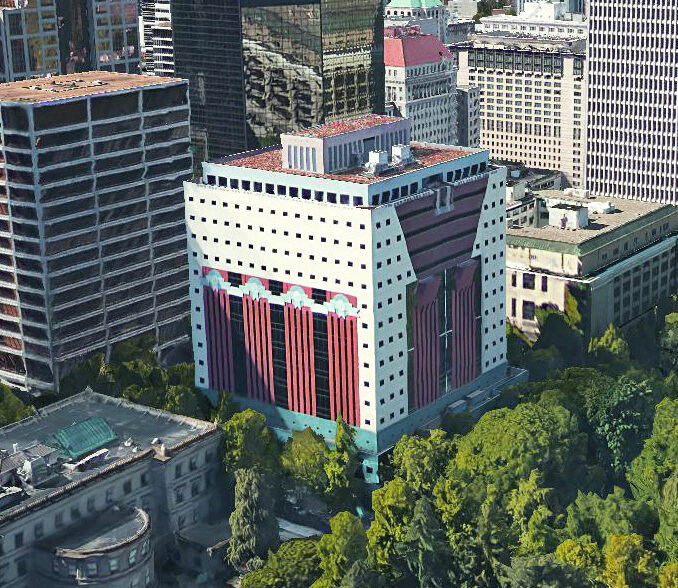Using EPDs to Scale Decarbonization
How Brightworks Uses EPDs to Scale Decarbonization

|
This article was originally published on One Click LCA and written by Aileen Carroll (Senior Sustainability Communications, One Click LCA). How Brightworks Sustainability helps clients embed carbon transparency into procurement and designEnvironmental product declarations (EPDs) are a critical tool for reducing embodied carbon across the built environment. Increasingly, project teams use EPDs not only to comply with disclosure requirements but also to inform material selection, procurement strategies, and early-stage design decisions. In a session at the Summer Sustainability Summit 2025, experts from Brightworks Sustainability detailed how their clients have begun to rely on EPDs to transition away from generic emissions factors, improve Scope 3 reporting accuracy, and prioritize low-carbon materials in specifications. From data centers and commercial interiors to high-volume real estate portfolios, EPDs now shape how carbon is measured and how purchasing decisions are made. The discussion offered practical insights into how EPDs support measurable carbon reduction, especially in high-intensity projects like data centers, and why companies that fail to provide EPDs may lose access to key markets. Project teams increasingly use EPDs as design toolsBrightworks shared that clients have started integrating EPD data directly into design workflows and procurement systems. Rather than treating EPDs as documentation produced after design completion, some firms now use them to inform early-stage decisions. EPDs allow clients to differentiate between similar materials on both price and global warming potential and to validate whether lower-carbon options actually result in measurable reductions. This shift reflects a growing recognition that early design choices have a disproportionate impact on embodied carbon. As more project teams adopt LCAs at concept and schematic design stages, access to high-quality product data becomes essential. Whole-building LCAs, using product-specific EPDs, have shown that reductions are possible, even without changes in structural design, by simply selecting verified low-carbon materials. Manufacturers risk exclusion without published EPDsFor manufacturers, the session delivered a clear warning: the absence of EPDs now results in missed revenue, even if their products meet performance and cost requirements. Brightworks Sustainability has worked with clients that exclude vendors from consideration solely because they cannot provide EPDs. In many cases, this rule is now embedded in Requests for Proposal (RFPs), bid scoring systems, and catalog eligibility criteria. In high-growth sectors such as mechanical systems, electrical infrastructure, and interior finishes, where EPD availability remains limited, the lack of published data represents both a compliance gap and a market disadvantage. Data centers emerge as a priority for embodied carbon reductionBrightworks has identified data centers as one of the most carbon-intensive typologies in the built environment in terms of both operational energy and embodied carbon. In particular, mechanical, electrical, and plumbing (MEP) systems have proven to be the dominant contributor to embodied impacts over the building life-cycle.
This high-carbon profile reflects the replacement frequency of MEP systems over the lifespan of the facility. As systems such as HVAC units, switchgear, and piping are updated multiple times, and often on cycles shorter than the building’s shell and core, their cumulative embodied carbon exceeds that of structural components. In Brightworks’ assessments, structure and enclosure account for only about 20% of total embodied emissions. With developers setting net-zero targets for construction and operation, embodied carbon has become a procurement issue. To meet these expectations, clients now require EPDs from the supplier.
Initiatives such as the iMasons Climate Accord are also driving industry alignment. By promoting standardized methods for quantifying and reporting embodied carbon in digital infrastructure, these efforts underscore the growing role of verified product data and the strategic importance of EPDs in project delivery and supplier qualification. Using specific EPDs can reduce reported emissionsA common assumption in Scope 3 accounting is that more specific data might increase reported emissions. However, Brightworks Sustainability has observed the opposite. When project teams replace generic emissions factors with EPDs, total emissions often decrease because EPDs can reflect cleaner products that generic databases do not capture. Abbott explained the issue in practical terms: companies often pay more for products with lower carbon footprints, for example, those using recycled content or bio-based materials, but cost-based accounting models penalize them for the higher upfront spend.
Abbott noted that this applies across product categories, including concrete, steel, insulation, carpets, and even office supplies like printer paper. What role can AEC professionals play in driving EPD creation?AEC professionals play a critical role in accelerating the availability of environmental product declarations (EPDs) by both specifying products with EPDs and applying consistent pressure across the value chain. Industry coalitions such as the iMasons Climate Accord have demonstrated how collective action can accelerate transparency. In one example, major tech companies jointly issued an open letter to manufacturers requesting EPDs, and saw market response. Small coalitions of AEC professionals can also work together to provide education, technical guidance, and persistent demand for EPDs.
For AEC professionals seeking verified carbon data, the most effective strategy may be to speak — and act — together. Decarbonization at scale demands verified product dataThe discussion with Brightworks Sustainability reinforced a broader industry truth: EPDs have become foundational infrastructure for scaled decarbonization. They support more accurate Scope 3 accounting, enable informed design choices, and meet procurement and regulatory requirements across geographies. This reality creates an urgent need for alignment between manufacturers, architects, engineers, and sustainability consultants. Without verified, comparable, and accessible product data, large-scale decarbonization remains out of reach. As the regulatory landscape tightens, product-level emissions data will not only influence purchasing decisions, but also market access. Firms that respond early by investing in scalable, verifiable EPD production stand to gain, while those that delay may find themselves disqualified from tomorrow’s projects. |


Starwood Hotels & Resorts
1 Hotel Hanalei Bay Luxury Resort
Starwood Hotels & Resorts
1 Hotel Hanalei Bay Luxury Resort
Princeville, HI
Brightworks provided LEED certification management and energy services to support Starwood Hotels with the major renovation and rebranding of Kauai’s Princeville Hotel into a flagship 1 Hotel resort focused on sustainable hospitality and wellness. Brightworks collaborated with the design and construction team to incorporate innovative strategies that will save energy and water, improve operations, and protect local ecosystems. Brightworks also delivered comprehensive energy modeling services, which allowed the project team to identify energy conservation measures and evaluate options.
Practices Engaged:
Sustainable Built Environments
Industry Sectors:
Hotel
Building Types:
Hotels & Resorts


Gerding Edlen
5 MLK Apartments
Gerding Edlen
5 MLK Apartments
Portland, OR
This biophilically-designed tower achieved LEED Gold and Fitwel 1 Star certification while also featuring a resiliency program. The building offers 100,000 square feet of offices on lower floors and 220 residential units with landscaped terraces above.
Practices Engaged:
Sustainable Built Environments, Healthier Built Environments
Industry Sectors:
Residential
Building Types:
Luxury Residential


City of Portland
Case Study
City of Portland
Case Study
Practices Engaged:
Healthier Built Environments
Industry Sectors:
Corporate, Government, State & Local
Building Types:
Historic Buildings
Read more


ABB
North American GreenCRREM Assessments
ABB
North American GreenCRREM Assessments
Arkansas, California, Florida, Georgia, Michican, Missouri, Mississippi, North Carolina, New Jersey, New Mexico, Oklahoma, Pennsylvania, South Carolina, Tennessee, Texas, Virginia, Wisconsin, West Virginia
ABB is a global leader in industrial technology. Across 17 states, Brightworks conducted sustainability assessments on more than 50 buildings in ABB's North American portfolio, including manufacturing, office, and warehousing facilities. An extensive report providing a baseline assessment for each site helped ABB prioritize energy efficiency measures, budget for carbon reduction efforts, and calculate ROI as part of its GreenCRREM program.
Practices Engaged:
Sustainable Built Environments, Carbon, Energy
Industry Sectors:
Corporate, Manufacturing


Salesforce
Case Study
Salesforce
Case Study
This letter to the industry highlights the urgent need to address embodied carbon in MEP/IT/AV systems. While operational emissions have seen progress, this embodied carbon remains a challenge. This article reveals insights to guide the industry toward a 50% reduction by 2030 to stay on track for meeting net-zero carbon targets for 2050.
Practices Engaged:
ESG + Corporate Sustainability, Sustainable Built Environments, Carbon, Materials
Read more


AI Meets Lower Carbon Concrete
AI Meets Lower Carbon Concrete
Concrete accounts for 8% of global GHG emissions, which is more than every country except the US and China. Lower carbon concrete is a critical climate solution, but designing it isn’t simple. While AI offers promise, experts warn of its limitations in capturing real-world variables. This post explores why human expertise still leads the way, and how integrative strategies are reshaping concrete’s future.
Practices Engaged:
Materials
Read more

-
U.S. GSA Diplomatic Security OfficeDiplomatic Security Office | Seattle, WA
-
U.S. Social Security Administration OfficeVan Nuys Office | CA